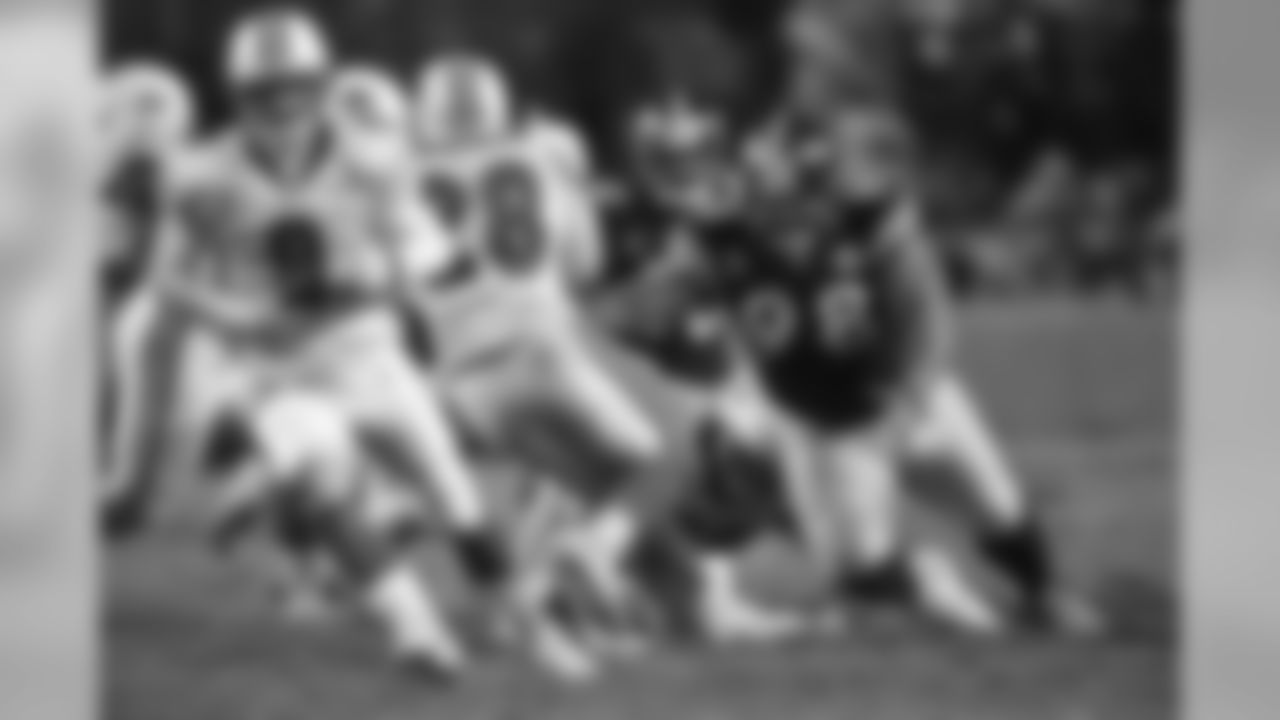Matt Williamson is former college and NFL scout and current co-host of "SNR Drive" on Steelers Nation Radio. You can hear him throughout the offseason on Mondays, Wednesdays and Fridays from 4-6 p.m.
Last week, Steelers Head Coach Mike Tomlin joined an "SNU Huddle" audio call and answered fans questions about the draft, the current roster, the upcoming schedule and more.
One caller from Louisville, Kentucky shared that one of his all-time favorites was nose tackle Casey Hampton and then asked Tomlin if there might be a player coming up through the ranks that could fill the position like Hampton did.
I listened to Tomlin's answer: Hampton was a great player and served the team well for many years. But the game of football has changed - and so too has what is often needed from the position.
I agree with Tomlin's assessment.
Hampton and Joel Steed were tremendous football players. Both nose tackles anchored great Steelers run defenses. Steed from 1992 until 1999 and more recently, Hampton from 2001 until 2010.
These players routinely demanded center/guard double teams in the run game. Their presence in this capacity allowed Pittsburgh's active linebackers to flow more freely to the football and make play after play. Hampton and Steed often controlled more than one gap in the run game and clearly made those around them better. But in Hampton's 173 games played in a Steelers jersey, he sacked the quarterback just nine times and Steed recorded nine and a half sacks over his 115 games.
Check out the greatest photos of Pittsburgh Steelers nose tackle Casey Hampton.












Even in the late 1990s and early 2000s, if a 3-4 defense had a dominant nose tackle like Hampton or Steed, the opponent could still scheme that player off the field by using a three and four receiver sets in clear passing personnel groupings and formations. But the catch-22 of that day was that if a defense with an odd front didn't have such a player, then they were extremely vulnerable in the running game. So, at times, great nose tackles could be made less effective by scheme.
But the game has changed. In 2019, only the 49ers and Ravens ran the ball more than they threw. On first down, only Baltimore and Indianapolis called a running play more often than a pass and more than half the teams in the league called a pass on first down over 60% of the time. The league as a whole had three or more wide receivers on the field last year nearly 50% of the time and that doesn't even account for the high percentage of '12 Personnel' (1 running back & 2 tight ends) groupings in which at least one of those tight ends is really just a larger bodied wide receiver.
16 players ran for over 1,000 yards last year. In both 2018 and in 2017, there were only nine. During Hampton's final year, 2010, the NFL had 17 rushers eclipsing 1,000 yards. There were 15 the year before that, 16 in 2008 and 17 in 2007. Last year stands out as an anomaly, as it is becoming clear that offenses around the NFL are being run through their passing games rather than a bell cow runner.
But more than the traditional stats or even the stats now versus Hampton and Steed's time in the league can tell us, defending the pass is what makes the NFL world go 'round. Simply put, defensive linemen must pressure the quarterback. And everyone on defense has to be able to run. Every position on the field has to greatly influence the passing game in order to have real value.
The demand for this type of player is decreasing at a very rapid rate and we are seeing that with how Pittsburgh is adapting their current roster construction. Even though he is a shorter wide-bodied interior player, especially in his lower half, Javon Hargrave influenced the passing game far more than just a power interior plugger. The Eagles obviously recognized Hargrave's value and gave him a three-year contract worth a reported $39 million to play next to Fletcher Cox, one of the most disruptive interior defensive linemen of this generation.
Despite being a great and emerging young player, even with Stephon Tuitt's injury, Hargrave played just 62.7% of the snaps last year. In 2018, he was only on the field 43.6% of the time for the Steelers. And in those snaps, Hargrave was rarely asked to just hold the point of attack, eat up blocks and play the run. Hargrave is a disruptor, which is why the Eagles and their attacking four-man front were so enamored with what he brings to the table. Even though Hargrave wasn't a massive snap count guy, he will be missed without question.
But with Hargrave off to Philadelphia, the Steelers didn't go out and acquire a massive anvil for the middle of their defense. Instead, I'd expect that Tyson Alualu will spend much more time on the nose when Pittsburgh is in their traditional 3-4. While Alualu is more suited for defensive end in that alignment, the reality is that this veteran player has shown enough prowess over his time with the Steelers that can hold the point of attack. He doesn't have to be Hampton or Steed.
And while the Steelers didn't add a huge human being for the nose tackle spot, they did trade for Chris Wormley, who at 6' 5" and right around 290 pounds doesn't fit the body type whatsoever of Pittsburgh's nose tackles of the past. In fact, that is exactly what this team has been looking for at defensive end. And going back to his days at the University of Michigan, Wormley actually spent some time on his feet in a two-point stance. That isn't the description of a nose tackle at all.
Then, in the draft, the Steelers used a seventh-round pick on Carlos Davis. At the Combine, Davis weighed in at 313 pounds and stood 6' 2". Those dimensions are closer to what we generally think of from the nose tackle position, but like Hargrave before him, Davis is an upfield player. While he has a lot of work to do with his fundamentals, his explosion off the ball is simply outstanding and this former high-level discus thrower is much more of an explosive athlete rather than a space-eater.
The real way fans should look at this defensive line now is to pretty much lump all of them together as "Defensive Tackles" rather than "Ends or Nose Tackles". Pittsburgh employs a four-man front with TJ Watt and Bud Dupree on the outside more than they do their 3-4, which in essence is a five-man front.
It is pretty clear that Pittsburgh views the nose tackle position differently than it did in the days of Steed and Hampton. And for good reason. That is the way the league has been trending for some time now and it is certainly the best way to go to keep this defense amongst the league's best. It also gives the Steelers a lot of position flexibility with their big people on defense and better allows Pittsburgh's coaching staff to find mismatches in their favor as well as rotate players to keep them fresher with these less defined roles.














